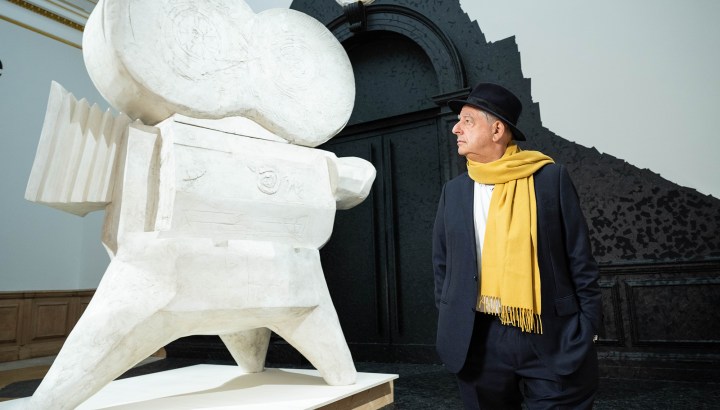AFTER THE BELL
Investing in art, and the art of investing

What we think of as the ‘art market’ really refers to the sales of a small sample of expensive, high-profile works rather than the overall market. Auction houses put on sale art they think will fetch great prices, and then, weirdly, they do.
To be successful at investing you need to be astute, thoughtful, adaptive and have an understanding of financial documents. Or, you could just buy a work of art by William Kentridge.
When it comes to Kentridge, superlatives lose their power. He is a consummate artist in the fullest sense of the word. I know there are people with gripes and snipes, but as a longtime art lover, it seems obvious to me that he is extraordinary.
Kentridge has opened a new exhibition at London’s Royal Academy, Glory Central for artists, which spans 40 years of his diverse and extraordinary work. Kentridge’s interests and artistic range are mind-boggling and include etching, drawing, collage, film, sculpture and tapestry; his work has accompanied theatre, opera, dance and music. And yet his style is instantly recognisable, with that rare, innate signature some artists just have. As diverse as he is, he can’t help but be himself.
He is also, to the best of my knowledge, an excellent person; smart, clever and intellectual, yes, but with such broad interests and deep knowledge that suggest a curiosity that breaks barriers and draws connections in an intuitive way. In a recent interview with the Financial Times, he made this comment: “Here I am constructing myself, from yesterday’s dream and tomorrow’s expectation.” I mean, don’t you want that on a T-shirt?
I actually know a little about him from personal experience. As a very young reporter, I was working for The Star and the Tonight section was always struggling to find people willing to write about art. As it happened, I was going out with an art curator at the time who had just put together an exhibition of the work of an artist she described as “very good”. She begged me to interview this artist, Kentridge obviously, and she didn’t accept my excuse that I knew absolutely nothing, I mean absolutely nothing, about art.
Visit Daily Maverick’s home page for more news, analysis and investigations
I’m pretty sure it was Kentridge’s least interesting interview of his entire life, and my questions — even with certain outside prompting — were seriously inane. But the article was published, and my girlfriend remained my girlfriend, which was after all the point of the exercise. Kentridge was, as it happens, the victim in this scenario.
But I do remember loving his paintings and prints, one of which was going for the ludicrous price of R1,200. I couldn’t afford it at the time, although I was tempted. I have just looked at the Strauss & Co website, and amazingly, one of those prints has just been sold. The current value is a little less than half a million rand. For a print.
So, what kind of investment return is that? Well, it’s about a 400% return over 37 years, so call it 10% nominal value appreciation a year. That looks great, but it’s probably not as much as you might think. Over the same period, the JSE All Share Index increased by roughly 1,500%.
And this is the first lesson about investing in art. And the second, as an old colleague and friend of mine, Patrick Lawlor, wrote in an article about the art market a few years ago, is that there is a huge amount of selection bias involved in the art market.
What we think of as the “art market” really refers to the sales of a small sample of expensive, high-profile works rather than the overall market. Auction houses put on sale art they think will fetch great prices, and then, weirdly, they do. So, the extraordinary increases in the value of some works of art are by no means a reflection of the market as a whole.
Lawlor does cite some in-depth research on the topic which showed that art between 1900 and 2012 had a real, annualised return of 2.4%, stamps 2.8% and violins 2.5%. That compares with 5.2% for equities, 1.5% for bonds and 1.1% for gold.
But as Lawlor and other art investors point out, that may be true, but how do you value the pleasure of looking at the painting for all those years of your life? Shouldn’t you factor that in somehow?
One person who has spent a lot of time and effort investing in art is well-known fund manager Piet Viljoen from Counterpoint Asset Management, and his line has always been that we should buy as much art as we can afford even if it’s not a great investment. Art is made by people who have not co-opted into the power structures of politics and business, and collectors play an important role in developing our ability to look at ourselves critically, he wrote some time ago.
I agree with that, and really wish I had bought that damn Kentridge print. DM/BM
















 Become an Insider
Become an Insider
Comments - Please login in order to comment.